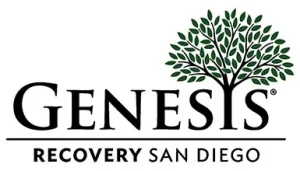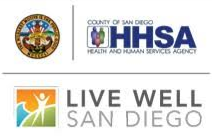A common misconception associated with medication-assisted treatment (MAT) is the idea that it only substitutes one drug for another and is not a cure for opioid addiction. For example, buprenorphine, naltrexone, and methadone are three medications used to treat opioid addiction. Methadone is an opioid agonist, buprenorphine is an opioid partial agonist, and naltrexone is an opioid antagonist. However, scientific research has proven that these medications relieve withdrawal symptoms and cravings and improve the odds of successful recovery for people who misuse opioids, including painkillers and heroin.
MAT works in two ways, both of which change brain chemistry. An opiate agonist activates the same receptors as opiates but absorb into the blood over a longer period of time, thus prolonging withdrawal symptoms and breaking the psychological link between taking opioids and immediately feeling the high. An opiate antagonist attaches to the same receptors but fully blocks them instead, so that if someone relapses and takes an opiate, they will not feel its effects.
Although these treatments technically do substitute one opiate for another, Dr. Stuart Gitlow rationalizes that a lethal drug is being replaced with one "that allows you to go back to work and have money in your pocket and allow you to live normally again." (Sheridan)[1] In other words, MAT can stabilize opioid receptors and help the body and brain reverse their altered homeostasis while helping to avoid relapse and fatal overdose. Various studies have found that MAT can substantially reduce the mortality rate in opioid users by more than half.[2] Furthermore, without these medications, research shows that more than 90 percent of individuals with opioid addiction relapse within weeks of detox.
Although the evidence is clear that MAT is the best way to tackle the nation’s opioid epidemic, there is still a stigma attached to using these medications. Many argue that America has not recognized addiction as a disease, but instead view it as a moral failure filled with criminal choices and bad judgement, and therefore do not see medication as a legitimate answer. However, addiction expert and Stanford psychiatrist Anna Lembke describes opioid addiction in a way that many can understand, saying, "If you see somebody who continues to use despite their lives being totally destroyed...nobody would choose that. Nobody anywhere would ever choose that life. So clearly it is beyond this individual’s control on some level." (Lopez)[3] Others, especially supporters of abstinence-based models, still argue that MAT goes against the goal of full sobriety.
In October 2017, Scott Gottlieb, commissioner of the Food and Drug Administration, announced new steps that the organization plans to take to promote MAT for substance use disorder.[4] Gottlieb, who previously made efforts to address the opioid epidemic as a formal issue, also described the efforts the FDA would make to decrease stigma surrounding the use of medication in treating substance use disorder. Expanding access to MAT was one of the key recommendations. Helping more physicians get certified would make it possible for more patients to get the treatment they need for opioid addiction.[5] Widespread access to MAT, which one day might become a standard part of primary care, is the next goal for treating opioid-use disorder. Clinical studies already show that MAT is effective, and now public and private health care systems need to integrate MAT into their treatment programs in order to support patients and their caregivers.
[1] Sheridan, K. (2017, May 15). How effective is medication-assisted treatment for addiction? Retrieved December 08, 2017, from https://www.statnews.com/2017/05/15/medication-assisted-treatment-what-we-know/
[2] Sordo, L., Barrio, G., Bravo, M. J., Indave, B. I., Degenhardt, L., Wiessing, L., . . . Pastor-Barriuso, R. (2017, April 26). Mortality risk during and after opioid substitution treatment: systematic review and meta-analysis of cohort studies. Retrieved December 08, 2017, from https://www.bmj.com/content/357/bmj.j1550
[3] Lopez, G. (2017, July 20). There's a highly successful treatment for opioid addiction. But stigma is holding it back. Retrieved December 08, 2017, from https://www.vox.com/science-and-health/2017/7/20/15937896/medication-assisted-treatment-methadone-buprenorphine-naltrexone
[4] Facher, L. (2017, October 25). Gottlieb makes push to fight opioids with medication-assisted treatment. Retrieved December 08, 2017, from https://www.statnews.com/2017/10/25/fda-gottlieb-opioids-medication/
[5] Ries, R., & Jackson, A. (2017, September 21). Most people with opioid addictions don't get medication-assisted therapy. Retrieved December 08, 2017, from https://www.statnews.com/2017/09/21/patients-opioid-addictions-dont-get-right-treatment-medication-assisted-therapy/

